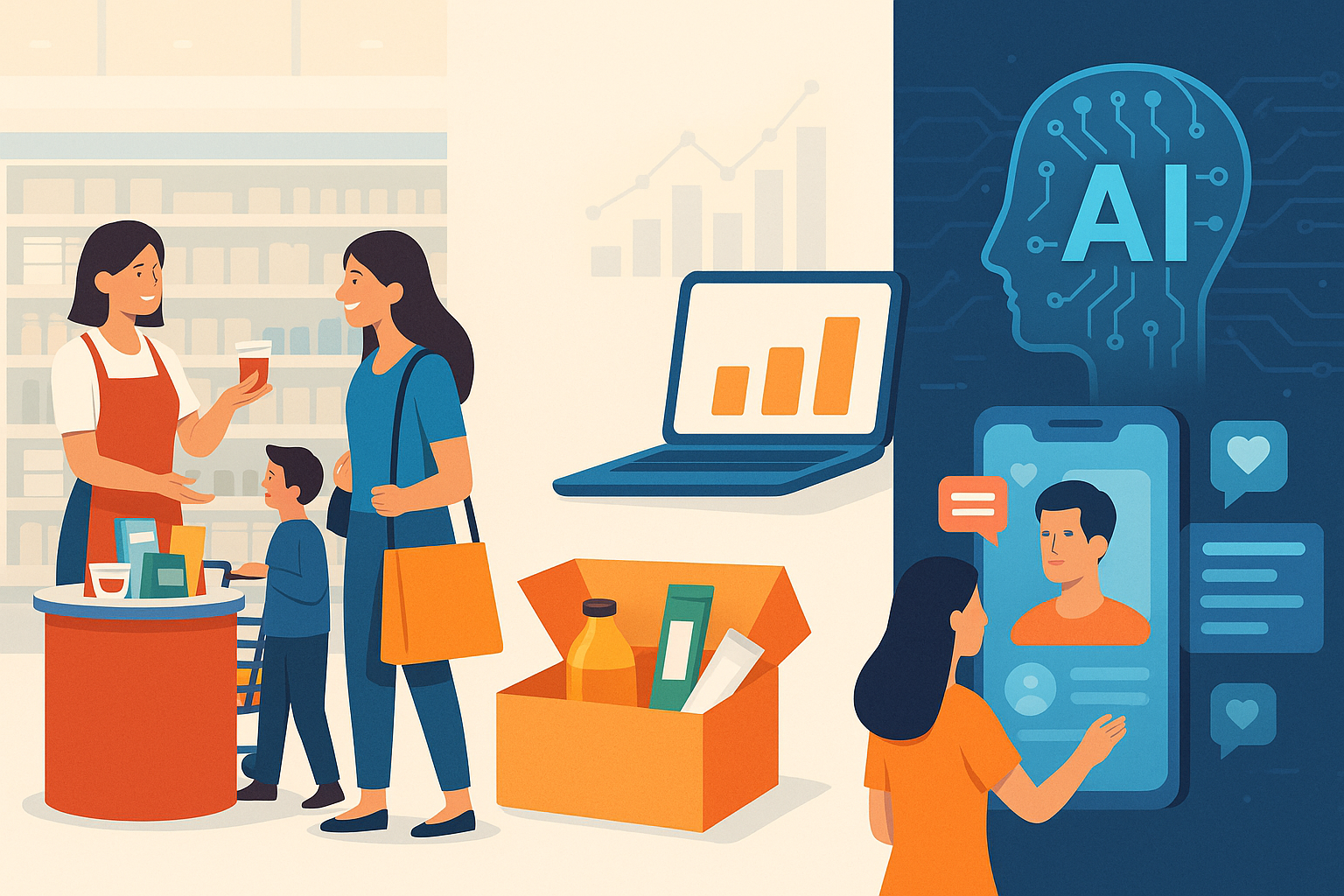
The Evolution of Product Sampling: From In-Store to AI-Powered Solutions
Introduction
Product sampling has long been a pillar of FMCG marketing. From handing out samples in grocery aisles to mailing trial-size products to potential customers, the core idea remains: let consumers try before they buy. However, like all facets of marketing, sampling has undergone a seismic transformation. The shift from traditional in-store tactics to sophisticated, AI-powered strategies marks a new era in how brands engage with consumers.
This article explores the evolution of product sampling, the rise of AI-driven solutions, and what it means for brands aiming to remain relevant in an increasingly personalized and digital world.
1. The Early Days: Sampling in Physical Retail
In its earliest form, product sampling relied on direct human interaction. Brand ambassadors or in-store promoters would offer samples to shoppers in supermarkets or during events. This method had several benefits:
- Immediate engagement: Customers could taste, touch, or use the product on the spot.
- Real-time feedback: Brands could observe reactions or ask simple questions.
- Tangible brand presence: Seeing, hearing, and feeling the brand in a real-world context helped foster familiarity and trust.
However, traditional sampling also came with major limitations:
- Lack of precise targeting
- High levels of waste
- Limited feedback collection
- Low scalability
- Difficult ROI measurement
2. Direct Mail and Subscription Boxes
As marketing evolved, brands looked beyond in-store approaches. Direct-to-home sampling via mail and subscription boxes gained popularity. This offered a more controlled way of reaching potential customers:
- Targeted demographics through mailing lists or purchase history
- Lower dependency on foot traffic or retail partnerships
- Opportunity to include additional brand materials or coupons
While this improved reach and reduced some manual labor, it still had gaps in real-time engagement and feedback. Brands often relied on broad demographic data or delayed survey responses.
3. Digital Campaigns and Influencer Sampling
In the 2010s, with the rise of social media, product sampling embraced digital channels. Influencer collaborations became a powerful way to put products into consumers’ hands while creating shareable content:
- Influencers received products to test and review
- Followers were encouraged to try the same products through giveaways or discount codes
- Sampling became intertwined with brand storytelling
This approach helped expand reach, especially among younger demographics, but challenges remained, such as inconsistent influencer performance and limited feedback quality.
4. Enter AI-Powered Product Sampling
Today, we are witnessing a new frontier in sampling—one powered by artificial intelligence. Platforms like Samplify are revolutionizing how FMCG brands deliver samples, collect data, and build deeper relationships with consumers. Here’s how:
A. Precision Targeting
AI analyzes vast consumer data to identify the right audiences:
- Delivering samples to high-intent consumers
- Segmenting based on psychographics and behavior
- Reducing waste by excluding irrelevant targets
B. Personalized Sampling Experiences
AI curates sample boxes for each user based on individual preferences:
- Fitness enthusiasts receive health-centric samples
- Parents get kid-friendly products
- Beauty lovers receive skincare or makeup items
C. Real-Time Feedback and Insights
AI-powered systems collect and analyze user feedback via automated interviews or chatbots:
- Identify key trends and sentiments
- Categorize and visualize responses
- Provide fast, actionable insights to brands
D. Campaign Optimization
AI systems continuously learn and evolve:
- Improve targeting accuracy over time
- Adjust product recommendations dynamically
- Offer predictive insights for future campaigns
E. Integration with Omnichannel Marketing
AI-powered sampling connects seamlessly with CRM and e-commerce tools:
- Drive follow-up messaging based on sampling behavior
- Retarget users with personalized offers
- Track the entire journey from sampling to purchase
5. Why AI-Powered Sampling Is the Future
Modern consumers demand relevance and personalization. AI-powered sampling delivers on these expectations by:
- Reducing costs and sample waste
- Improving campaign ROI
- Offering deep customer understanding
- Enabling rapid scaling without traditional constraints
Brands that embrace AI-driven sampling will stay ahead by making smarter, faster, and more data-informed decisions.
Conclusion
From the bustling aisles of retail stores to the intelligent algorithms of digital platforms, product sampling has undergone a remarkable transformation. What began as a simple hands-on tactic is now a strategic, data-driven experience. For FMCG brands, this evolution offers not just efficiency but a powerful new way to build consumer trust, loyalty, and satisfaction.
Embracing AI-powered sampling isn’t just an upgrade—it’s a necessary shift for brands that want to lead in an increasingly personalized, digital-first marketplace.